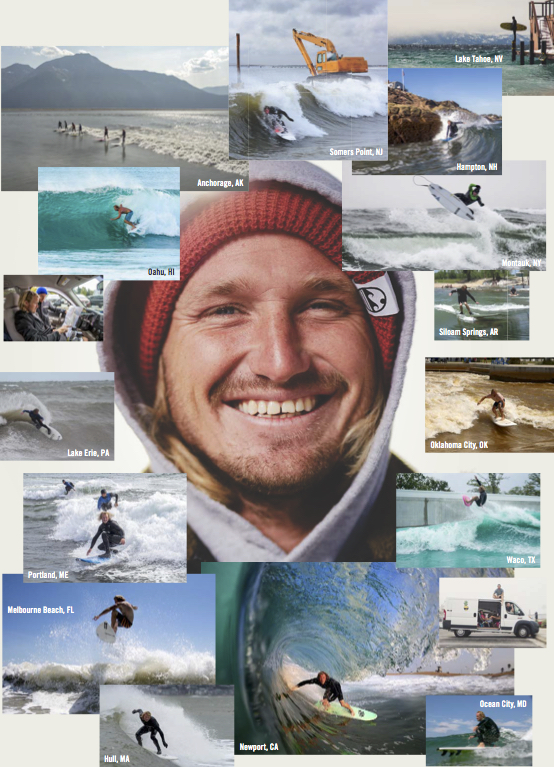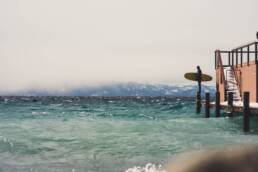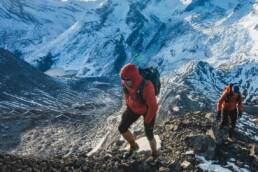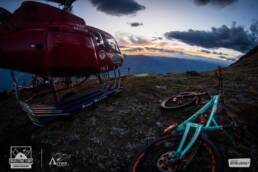Benjamin Graeff is stoked on everything. So when he became the first person to surf all 50 American States, locking in legions of fans along the way, the resulting sponsorship was gravy.
The wave that almost killed surfer and YouTube sensation Benjamin Graeff is located in land-locked Missouri. Nicknamed the “Centaur Chute,” the innocuous-looking knee-high swell is created during periods of heavy rain when the Missouri River washes out a road near the Spirit of St. Louis Airport. Typically that section of waterway travels at about 70 cubic metres per second (mps), but on the day Graeff attempted it, it was flowing at 2,800 cubic mps. “The weirdest thing is it doesn’t look that crazy; it looks normal because all the pressure and flow is underneath,” Graeff says. “I went out and got sucked off the back of my surfboard, and it was trying to pull me down into a hydraulic. I had a full freak out where I thought I was going to drown. I pulled a muscle in my back. Yeah, dude, it was heavy.”
Despite the grimness of the story, Graeff shares it with an infectious, upbeat attitude peppered with laughter and surf slang. It’s this persona that has garnered him 118,000 social-media followers in the past few years under the handle “Ben Gravy,” which is a high-school nickname. That and the fact he’s the first person to surf in every state in America.
Graeff created his YouTube channel in 2016, the same year he discovered river surfing. At the end of that year, he realized that with his stints on both oceans and various rivers, he had surfed in 14 states. “I commented on one of my blogs about how stoked I was to have done 14 states, and people were like, ‘Dude, you should surf all 50!’” he says. “It was a total joke, but then I read everyone’s comments and was like, ‘I’m totally doing this!’” Over the next three years, the 32-year-old surfed ocean breakers, lake swells, and waves in such rivers as the Boise in Idaho and the Yellowstone near Billings, Montana. He documented each experience for his socials and says his only rule was that the wave had to break without him there. “It has to be a spot other people can enjoy, even if I’m not around,” he says. “I can’t hire someone to drive me around in a boat.” In other words, no wakeboarding, and that’s challenging in states not known for their gnarly barrels. In one video we see Graeff ride a ridiculously small ankle-high wave on a Kentucky river for all of eight seconds. But when he steps off his board, he has a huge smile and pumps his left fist in the air, as if he’s just won the Olympics.

When he’s not travelling, Graeff lives on the coast in New Jersey. He’s been surfing since he was eight and competing since the age of 12, but despite showing exceptional promise, he wasn’t able to land a significant sponsor. “He never had the best of luck with sponsorships,” says his childhood friend Rob Kelly, who surfs for Billabong. “Our group of friends turned pro, and he started doing editing and filming,” skills he now uses to populate his YouTube channel.
Graeff looks like the quintessential surfer, with shoulder-length, sun-bleached blond hair, blue eyes, and a tanned complexion, but it’s his personality that really draws you to him. This man is legitimately stoked on life, and not just for the video camera. “He’s always been so positive,” Kelly says. “He can turn the worst waves into a fun session, and that’s how he lives his life too.” That attitude has paid off. Most of his three-year surf challenge was self-funded, although Hyperflex Wetsuits did throw him $2,000 when he first started, but now the sponsorships are rolling in. “It’s pretty wild to think I didn’t sign a professional surfing contract until I was 30 years old,” Graeff says. “I honestly believe I’m the first person to do that. It’s so funny.”
It’s well-deserved, and not just because of his record accomplishment or the fact he has over one hundred thousand people wanting to see him surf novelty waves in places like Kansas. Graeff is a legitimately excellent surfer. His videos regularly show him landing 180s off breaks, and switching between regular and fakey stances. During a memorable sequence in Arizona, he jumps from one surf board to another while riding a tiny wave. It may be a bit of a circus trick, but his joy makes you believe he’s having more fun than the crew at Mavericks. “It’s amazing to think something seemingly so silly has turned into a legitimate career,” Graeff says. “I’m just so stoked because if that’s possible, then anything’s possible.”
Vince Hempsall
Vince Hempsall lives in the beautiful mountain town of Nelson, British Columbia, where he spends his time rock climbing, backcountry skiing and mountain biking (when not working). He is the editor of Kootenay Mountain Culture Magazine and online editor for the Mountain Culture Group.
Related Stories
EVOC North America Ski Team 2012 – by Dendrite Studios
EVOC Sports' North America Ski Team 2012 video is a short film showcasing the mountains around Whistler, BC, and the…
Why Stand Up Paddleboarding is North America’s Fastest Growing Sport
S'up yo? They're flat but evidently phat. Can you guess what the continent's fastest growing sport is? According to a…
Why Did 2 Brothers Decide to Run North America’s 965-Km Crown Traverse?
Writer David Erickson shares the story of two brothers who braved a route that stretched nearly 1,000 kilometres…
Shambhala & Bass Coast Named Best Festivals in North America
Two British Columbia events have been awarded best festivals by DJ Mag: Bass Coast in Merritt won "Best Boutique…
Should Cascadia Leave North America?
Cascadia. It's not Canada. It's not America. It's ... better? Given the current political climate of soon-to-be "Trump…
Revelstoke Hosts North America’s 1st Heli-Bike Enduro
North America's first helicopter-supported enduro mountain bike race was held in Revelstoke this past summer. We caught…







